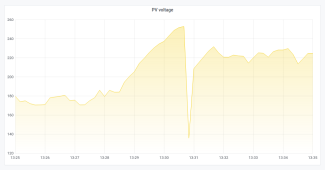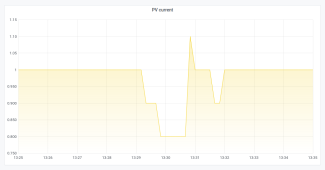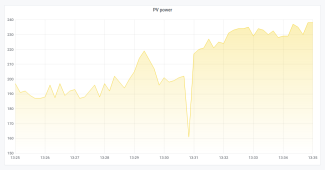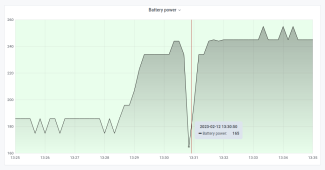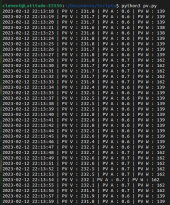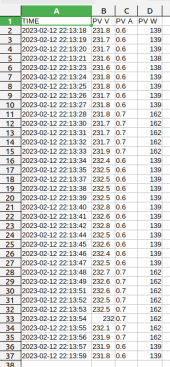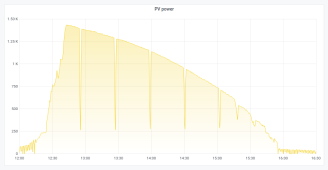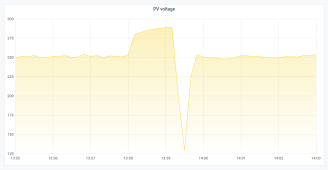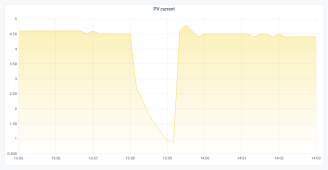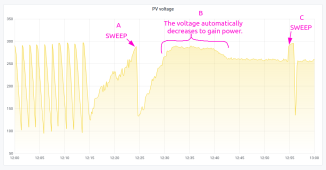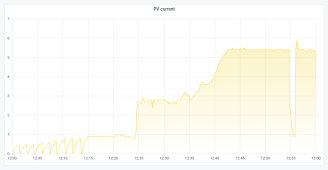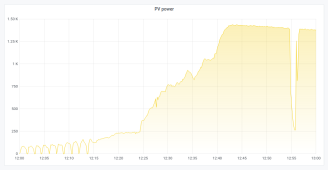After having carefully analyzed what is happening, as SRNE told me by e-mail.
This is indeed a sweep of the MPPT to find the maximum power point.
On the graphs below, we can see that this scan starts at 1:29 p.m. and ends at 1:31 p.m.
Before 1:29 p.m. the power is +/- 200W and after 1:31 p.m. the power is +/- 230W, so we can say that the MPPT has found a better point. (no sun today at my place)
In my case it's a 120V to 450V MPPT.
From 1:29 p.m. the SCC starts looking for the Vmp voltage and the voltage rises (but not to Voc which is 290V at that time) then the voltage goes down to 120V which is the low voltage of my MPPT (seen on the screen ) before going up to Vmp.
What I find stupid is that when the MPPT starts scanning towards a higher voltage and it doesn't find better power, it should drop right back down instead of continuing to climb even higher and lose even more power.
Solar Assistant shows that other AIOs don't have this behavior so yes, we can say that the MPPT algorithm is unfortunately not great.
Yet I know that SRNE makes good MPPT SCCs that are widely used around the world. Strange...
That said, I don't want to generalize and it may be related to my model / firmware...
I remain convinced that this can be corrected with a new firmware.
On the other hand, I am less convinced to have soon a new firmware. ?
